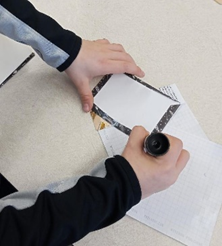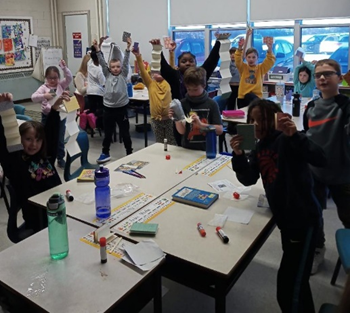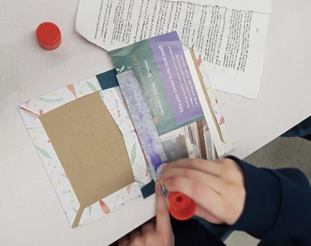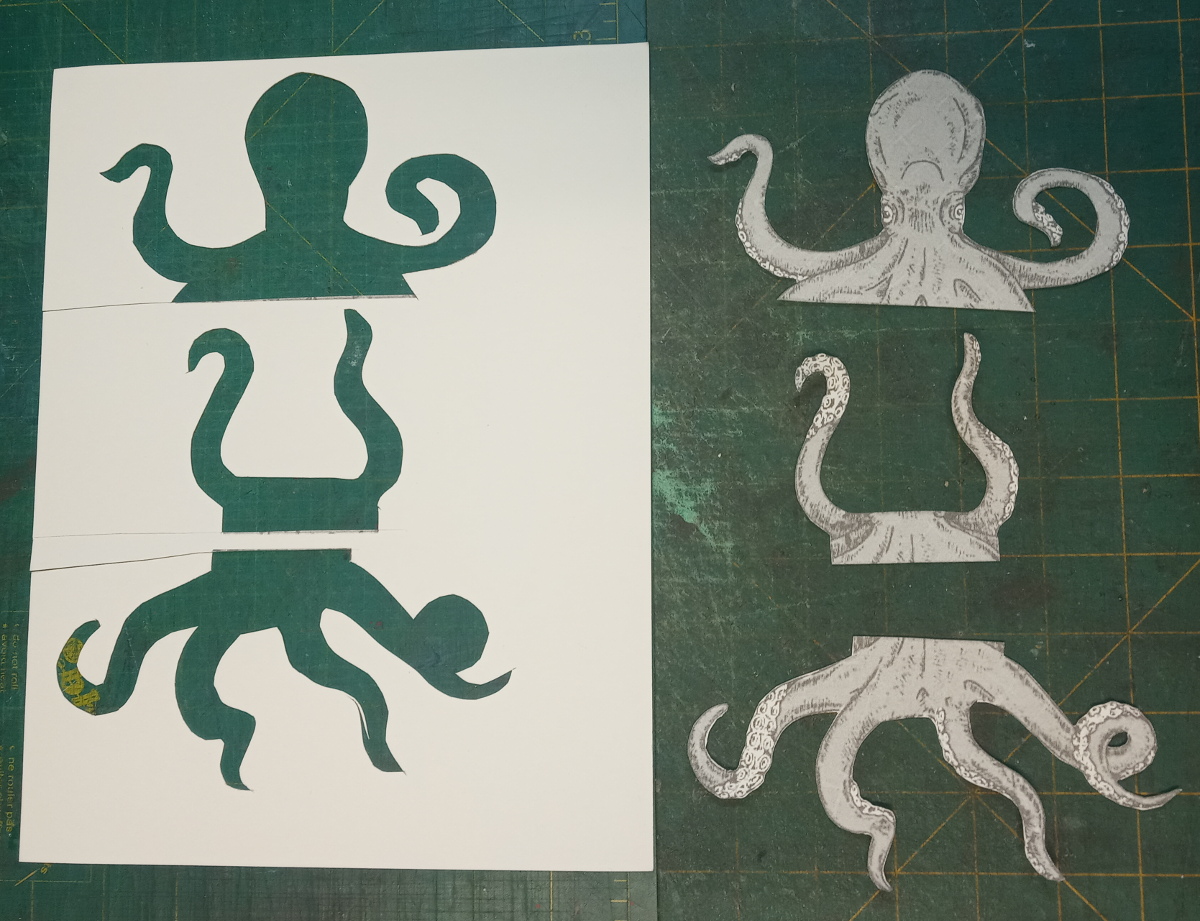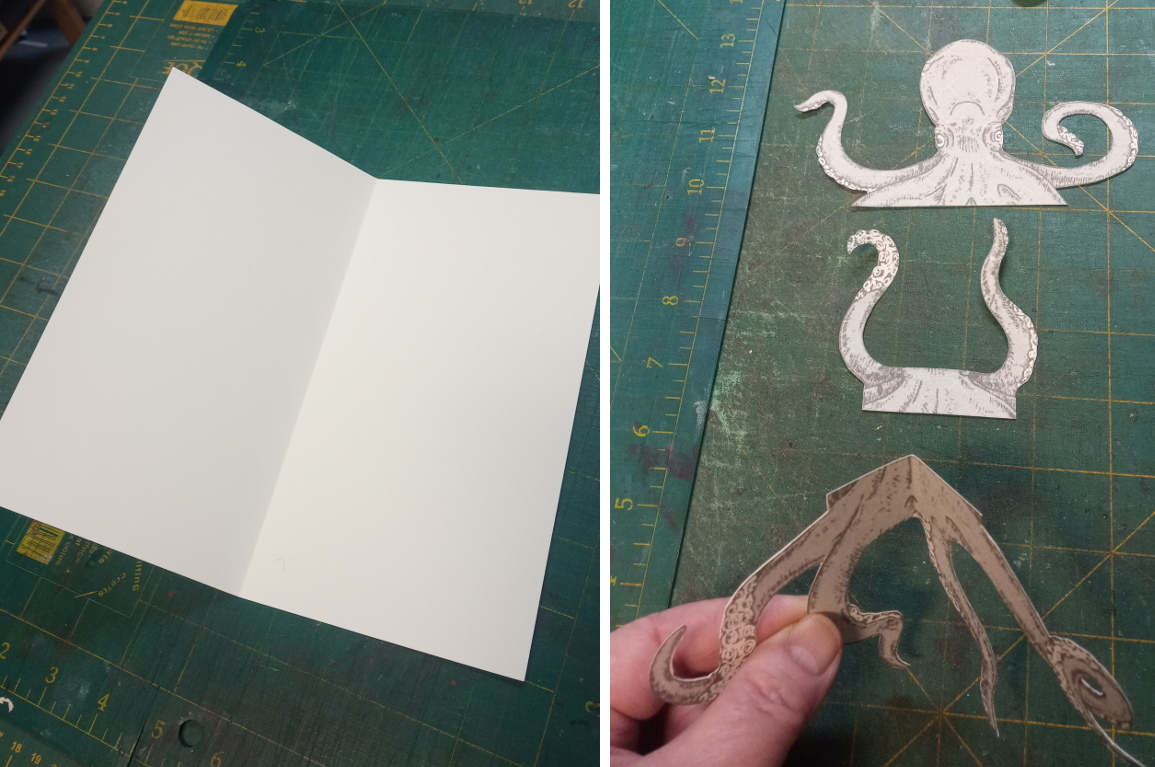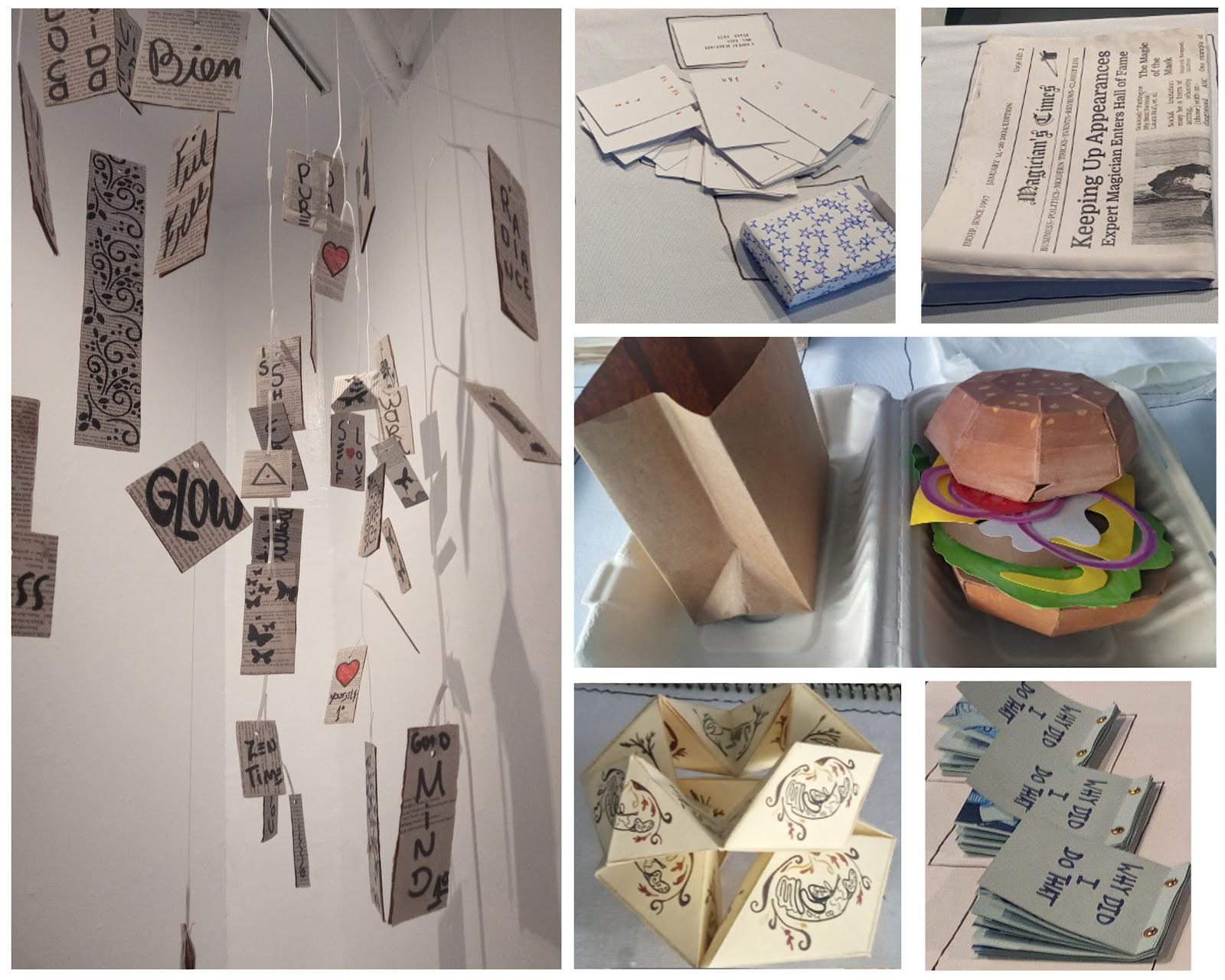Our members contributed thirteen handbound books showcasing a wide range of binding techniques and materials, as shown below. As well, we were able to publicly exhibit the Community Art Journal that we made last year so members of the public could see the finished book.
 |
Deborah Maurer Leather Journal Hand-dyed and painted leather with linocut printed skull image. Bound using a crossed structure binding technique. You can find Deborah on Instagram: @debmaureroriginals. |
 |
Larry Colwell Double Accordion Two blank accordion books bound together with a hardcover case enclosure. Full cloth covering with debossed cover design. |
 |
Marilynn Rudi Handbound Journal Hardcover accordion structure with spine reinforcement and button closure. Full cloth covering and original marbled paper paste-downs inside. |
 |
Heather Loney Hand-cut Treescape Original artwork and paper cutting. Hardcover binding using a case binding technique. You can see more of Heather's work on Instagram: @hkeloney. |
 |
Odyssean Press "Untitled (melancholia)" Modified casebound album binding with letterpress poetry. These two artist books explore the wilds of the mind as if they were a stormy sea. Poetic fragments are printed on top of previous layers, obscuring or highlighting certain words to both hide from the viewer and invite closer reflection. See more on Instagram: @odysseanpress |
 |
Ariel Bissett Handbound Journal Hardcover journal with exposed chain stitch binding. Bookcloth spine and corners with original marbled paper. You can find Ariel on Instagram: @arielbissett |
 |
Stephanie Morley Medieval Binding Cutaway A cutaway binding demonstrates the book construction by exposing the binding process. This is an example of a Gothic binding sewn on raised cords with sewn endbands. Spalted beech boards shaped by hand, linen cords laced in & pegged. Spine partially covered in leather. Rawhide strap closure with hand-shaped brass clasp. Handmade paper, handspun linen cords & thread, made by the binder. Deerhide tanned by the binder. Stephanie is on Instagram: @morleyambiguous. |
 |
Charles Salmon "Opening" Artist's book exploring a non-traditional organic book shape. Cover is made using papier mâché; textblock is a concertina structure supported by a knotted spine. Clasp is a gesso-painted apple stem and paper tube. Custom 5-sided box with fall-away sides and an origami base to support the book inside. The hand-lettered text is an old English blessing for an apple. |
 |
Sally Crawford "Marking Time" A folded book made from original botanical eco-printed papers with multiple surfaces and hidden pockets to inspire additional content creation. You can find Sally on Facebook: SallyCrawford.Art. |
 |
Emily Doucette Blank Journal Handbound journal, drawn-on boards, bound in quarter leather with raised bands and hand-tooled decorations on the spine. Sewn endbands and marbled boards. You can see more work on Emily's Instagram: @awltomorrowsbindings |
 |
Rhonda Miller "Bookbinding Materials & Techniques 1700-1920" Handbound book, bound using a split-board library binding with sewn endbands. Quarter leather with original marbling on covers and matching fore edge marbling. You can find Rhonda on Instagram: @myhandboundbooks |
 |
NSBAG Community Art Journal Created during Nocturne 2023. Members of the public were invited to create the pages based on the prompt, “What is your favorite thing?” You can watch our video on Youtube to see the artwork inside. The book structure is a hardcover binding with an exposed longstitch sewn on ribbon supports. Bound by Rhonda Miller. |















